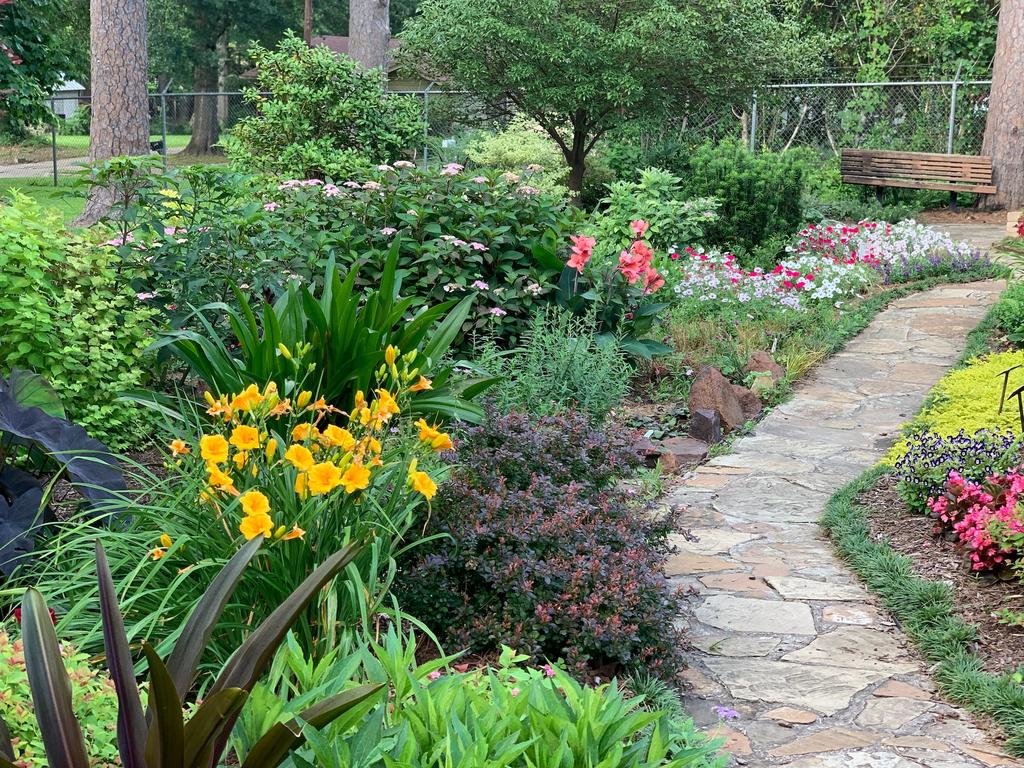Caring for the trees and greenspaces in your yard might seem daunting, but it’s both rewarding and essential. Whether you’re a seasoned gardener or just starting, understanding the basics can transform your outdoor space into a thriving haven.
This guide will show you simple yet effective ways to nurture your green friends. Your yard is more than land – it’s a canvas for sustainability and serenity. Let’s begin this green-thumb journey together.
Pruning
Pruning is essential for the health and appearance of trees and bushes, stimulating growth and removing potentially dangerous dead branches.
Start by identifying which branches need removing — look for those that are dead, diseased, or crossing others, creating unnecessary clutter within the plant.
For bushes, thinning the interior allows light and air to penetrate, promoting healthy growth. Use sharp, clean pruning shears for small branches and a saw for larger ones, making cuts at a 45-degree angle to prevent water accumulation and disease.
Always cut just above a bud facing the outside of the plant to encourage outward growth. Remember, the best time for pruning is late winter or early spring before new growth begins, though dead and diseased branches can be removed at any time.
As it can be a time-consuming process, lots of homeowners like to hire commercial property tree maintenance services that are equipped with the right tools and knowledge for the job. Pruning during the dormant season prevents sap loss and reduces stress on the trees and bushes.
Regular Watering
Watering your trees and greenspaces effectively is more nuanced than just turning on a hose. Young trees, in particular, need consistent moisture to establish their roots. Aim for deep, infrequent waterings that reach the roots rather than just moistening the surface. For mature trees, watering should be less frequent but sufficiently deep to encourage deep root growth, which enhances drought resistance.
Utilize a slow-drip irrigation system or a soaker hose to water deeply without runoff, targeting early morning or late evening to minimize evaporation. For your lawn and smaller greenspaces, adjust your watering schedule based on the season and weather conditions, ensuring you provide enough moisture during dry spells but avoiding overwatering, which can lead to root rot and fungal diseases.
Weeding
Every lawn is in danger of being overgrown by various weeds that thrive in the area. These aggressive plants take all the nutrients, water, and sunlight from your grass and other green spaces. Here are some to watch out for:
- Dandelion
- Crabgrass
- Broadleaf plantain
- Chickweed
- Creeping Charlie
- Clover
- Bermuda grass
- Quackgrass
- Groundsel
- Thistle
Neglecting weed control can result in a less vigorous garden or lawn, as these invaders can quickly dominate and overshadow your plants. To effectively manage weeds, regular monitoring and early intervention are key.
Pull weeds by hand when the soil is moist to ensure complete root removal, or use appropriate weeding tools for larger infestations. For a more preventive approach, consider applying mulch to suppress weed growth and maintain soil moisture or utilize pre-emergent herbicides to inhibit weed seed germination, always following package directions for safe application.
Mulching
Mulching helps regulate soil temperature, retain moisture, and suppress weed growth, creating a more stable and healthy environment for plant roots. It also breaks down over time, adding valuable organic matter and nutrients back into the soil, fostering strong plant growth.
To do this effectively, start by choosing an appropriate material for your needs – organic options like wood chips, straw, or leaf mold are popular for their soil-enriching properties.
Spread a 2-3 inch layer around your plants, taking care not to pile it up against stems or tree trunks to avoid moisture-related diseases. Replenish the mulch as needed, usually once a year, to maintain its benefits and keep your yard looking neat and well cared for.
By following these simple steps, mulching can significantly enhance the health and appearance of your landscape.
Fertilizing
Fertilizing plays a pivotal role in the health and vitality of your yard by providing essential nutrients that the soil might not naturally have in sufficient quantities. These nutrients, including nitrogen, phosphorus, and potassium, are critical for the growth, strength, and resilience of your plants.
Start by testing your soil to determine its nutrient content and pH level, allowing you to select the most appropriate fertilizer. Apply granular or liquid fertilizers according to the product instructions, ideally during the growing season when plants can best utilize the added nutrients.
Remember, over-fertilizing can be harmful, causing nutrient burn and environmental damage. Therefore, it’s crucial to follow recommended rates and schedules for the best results.
Pest and Disease Management
Unchecked pest infestations can rapidly harm or even kill plants. These issues can also spread quickly across your greenspaces, creating widespread problems that are difficult and costly to remedy.
To manage pests and diseases effectively, start with prevention by choosing disease-resistant plant varieties and maintaining a clean yard free of debris where pests could live. Regularly inspect your plants for signs of trouble so that you can catch any issues early.
For pest control, consider natural predators or organic pesticides as the first options, resorting to chemical treatments only when necessary and by the product’s instructions to avoid harming beneficial insects or the environment.
For diseases, remove and destroy affected plant parts, and consider fungicides if problems persist. Always follow best practices for application and safety.
Mowing
Mowing is more than just a cosmetic task – it’s crucial for maintaining a healthy and vibrant lawn. Doing so regularly encourages grass to grow thickly and evenly, crowding out weeds and enhancing its natural resilience.
To mow effectively, keep your mower blades sharp and set them to an appropriate height, typically 2.5 to 3.5 inches, to promote root growth without stressing the grass.
Mow when the grass is dry to prevent clumping and disease spread. Vary your mowing pattern with each cut to prevent soil compaction and wear patterns in the lawn. Following these simple guidelines not only keeps your yard looking manicured but also contributes to the overall health of your greenspaces.
Caring for your yard is a rewarding task that not only beautifies your space but also contributes to a healthier environment. Remember, each step you take, from pruning to mowing, plays a crucial role in creating a vibrant, thriving green space.
By following these simple guidelines, you’re not just maintaining your yard – you’re nurturing a sanctuary that brings joy and serenity into your life. Keep going; your green paradise awaits!




